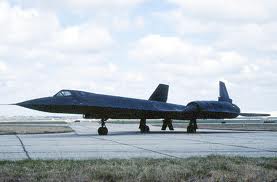I was recently encouraged by Bert Fowler to share some history of the 1912 program. I believe this is a tale worth telling. The 1912 program was highly successful and brought significant revenue into the AIL coffers.  , very little is known about it outside of those directly involved. It wasn’t until the 1980s that the existence of an ELINT system on the SR-71 was publicly acknowledged.
, very little is known about it outside of those directly involved. It wasn’t until the 1980s that the existence of an ELINT system on the SR-71 was publicly acknowledged.
What follows is a narrative of my experience working on the 1912 program, starting in late 1964 and continuing until 1992. Bear with me—this may be a long story. I apologize for any misspellings of names, but the events are recounted to the best of my recollection. Other old-timers from AIL may have their own versions of events, but this is how I remember it.
George Skahill and I were working in the Antenna Group under Jim McDonough in Melville when we were requested to assist a team led by Greg Stephenson and Rod Lowman in the Data Systems Group in Deer Park. Our task was to develop an ‘Antenna Coupler Bay’ for ground checkout of an ELINT system.
Although George and I had secret clearances, we didn’t have the ‘need to know’ regarding the system’s intended application. We were only given its dimensions and frequency range—60MHz to 16GHz. Our work took place in the basement of the Deer Park manufacturing area, behind two cipher-locked doors.
During the first six months of working on the coupler bay, President Lyndon Johnson publicly announced the existence of the SR-71. (Interestingly, it was originally called the RS-71, but the President inadvertently swapped the first two letters.) A picture of the aircraft appeared in The New York Times, and both George and I quickly surmised that this was the vehicle we were working on.
By 1965, as we made progress on a working system and began prototyping couplers, George returned to the Antenna Group. Around that time, I was formally briefed into the program at the ‘Blue Feather One’ clearance level. I recall that the contract was through a Fairchild company located on Larkfield Road, just south of Jericho Turnpike. AIL was responsible for developing the ELINT system, its processing software, and the checkout equipment along with its associated software.
Once the coupler bay was built, we turned our attention to assembling the Automatic Ground Equipment (AGE) cart, which would control system checkout. During this phase, I traveled to Hewlett-Packard in California with Mike Silver, a lead engineer on the AGE, to monitor the production of RF couplers and RF sweep generators. The 1912 program was among the first to purchase HP’s full-octave-bandwidth sweepers, which were exceptionally heavy. These sweepers, along with an early version of the IBM 360 computer, were installed in drawers within the AGE cart, making it far less mobile than we had originally anticipated.
The AGE cart was assembled in a walled, cipher-locked enclosure near the indoor anechoic chamber in Deer Park. Some of my colleagues on this project included Stan Grzebyk, Danny Linino, Bernie Mueller, Roy Bruno (apologies for any misspellings), and Air Force Sergeant John Spek, who spent most of the year at AIL.
I had graduated from Seattle University and joined AIL straight out of college in June 1958. By March 1966, my wife Jan and I began contemplating a move away from Long Island. Though we had a lovely home in Northport Village, we felt that LI was too confining for our ‘out west’ mindset. When I mentioned my plans to Greg and Rod, they presented me with an alternative: join the 1912 program office in the field.
“Where?” I asked.
California.”
“What city?”
“Can’t tell you, but it’s in Northern California.”
“How long?”
“One, possibly two years.”
After discussing it with Jan, who was born in Fresno, we decided to sell our home in Northport, NY and move to an undisclosed location in California—such was our detachment from Long Island!
I obtained a ‘Blue Feather Two’ clearance and was finally informed that the location was Beale Air Force Base, near Marysville—about 40 miles north of Sacramento. However, I couldn’t disclose this information to anyone not cleared. By late March 1966, it was anticipated that the AGE equipment would be ready for delivery by July. Jan and I listed our house for sale and planned our departure accordingly.
I contacted AIL’s site manager at Beale AFB, Frank Kiel, and sent him money to place an ad in the local newspaper for a rental home that could accommodate our family—five girls and one boy. To our surprise, we received an offer for a four-bedroom house on 10 acres, about 12 miles from the base, which we accepted for mid-July occupancy.
As with most projects, software development was the last hurdle. By late May 1966, it became clear that the AGE system would be delayed several months due to additional work required for the control software. Since we had already sold our home, I was given the green light to move to Beale and report to Frank.
On the July 4th weekend, movers arrived to pack up our house, and we set off on the adventure of a lifetime.
